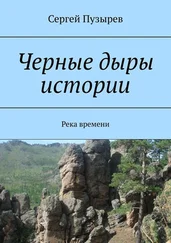Globular clusters, Cepheid variables, and radiation. Nature, 1919, 103, 25–27.
The internal constitution of the stars. Nature, 1920, 106, 14–20.
Mathematical Theory of Relativity (Cambridge, Cambridge University Press, 1923).
The relation between the masses and luminosities of the stars. Nature, 1924, 113, 786–788.
A comparison of Whitehead’s and Einstein’s formulas. Nature. 1924, 113, 192.
The Internal Constitution of the Stars (Cambridge, Cambridge University Press, ist edn, 1926; 2nd edn, 1930 with a ‘Note to the Second Impression: Reissued with a foreword by Chandrasekhar in 1988).
Stars and Atoms (New Haven, Yale University Press, 1927).
A symmetrical treatment of the wave equation. Proceedings of the Royal Society A, 1928, 121, 524–542.
The charge of the electron. Proceedings of the Royal Society A, 1928, 122, 358–369.
Excerpt from the Meeting of the Royal Astronomical Society, 8 November 1929. The Observatory, 52, 349.
Seen and Unseen World (London: Allen & Unwin, 1929).
The effect of stellar boundary conditions: A reply. Monthly Notices of the Royal Astronomical Society, 1930, 90, 808–809.
The problem of stellar luminosity. Nature, 1930, 125, 489.
Excerpt from the Meeting of the Royal Astronomical Society, 10 January 1929. The Observatory, 1929, 53, 39–40.
Letter to the Editors. The Observatory, 1930, 53, 208–211.
Excerpt from the Meeting of the Royal Astronomical Society, 9 January 1931. The Observatory, 1931, 54, 34–36.
Letter to the Editors. The Observatory, 1931, 54, 265–266.
Upper limits to the central temperature and density of a star. The Observatory, 1931, 91, 444–446.
The hydrogen content of stars. Monthly Notices of the Royal Astronomical Society, 1932, 92, 471–481.
Excerpt from the Meeting of the Royal Astronomical Society, 11 January 1935. The Observatory, 1935, 58, 37–39.
On «relativistic degeneracy». Monthly Notices of the Royal Astronomical Society, 1935, 95, 194–206.
Note on «relativistic degeneracy». Monthly Notices of the Royal Astronomical Society, 1935, 96, 20–21.
The pressure of a degenerate electron gas and related problems.
Proceedings of the Royal Society A, 1935, 152, 253–272.
Excerpt from the Meeting of the Royal Astronomical Society, 10 May 1935. The Observatory, 1935, 58, 176.
Relativity Theory of Protons and Electrons (Cambridge, Cambridge University Press, 1936).
Constitution of the stars. The Scientific Monthly, November 1936, 385–395.
Constitution of the stars. Annual Report of the Smithsonian Institution for 1932, 131–144. Lecture presented at the Harvard Tercentenary, 16–18 September 1936.
The hydrogen content of white dwarf stars in relation to stellar evolution. Monthly Notices of the Royal Astronomical Society, 1939, 99, 595–606.
Theory of white dwarfs. Conferences du College de France, Colloque International d’Astrophysique, 17–23 juillet 1939 (Paris: Hermann, 1941), 51–64.
Excerpt from the Meeting of the Royal Astronomical Society, 9 June 1939. The Observatory, 1939, 62, 171–174.
On Lorentz invariance in the quantum theory, II. Proceedings of the Cambridge Philosophical Society, 1942, 38, 201–209.
Review of Chandra’s An Introduction to the Study of Stellar Structure. Nature, 1943, 151, 91.
Fundamental Theory (Cambridge: Cambridge University Press, 1946).
The Nature of the Physical World (Cambridge, Cambridge University Press, 1928).
The Expanding Universe (Cambridge, Cambridge University Press, 1933).
The Philosophy of Physical Science (Cambridge, Cambridge University Press, 1939).
New Pathways in Science (Cambridge University Press, 1959).
EINSTEIN ALBERT. Fundamental ideas and problems of the theory of relativity. Nobel Lectures: Physics 1901–1921 (Amsterdam: Elsevier, 1967), 482–490.
On a stationary system with spherical symmetry consisting of many gravitating masses. Annals of Mathematics, 1939, 40, 922–936.
Reply to criticisms. In: Albert Einstein: Philosopher-Scientist (New York, Open Court, 1949).
ELBERT DONNA. On Working With Chandra. In: K.C. Wali (ed.), The Man Behind the Legend (London, Imperial College Press, 1997), 41–45.
EMDEN ROBERT. GASKUGELN: Anwendungen der mechanischen Warmetheorie auf kosmologische und meteorologische Probleme (Leipzig, Teubner, 1907).
ENZ CHARLES P. No Time to be Brief: A Scientific Autobiography of Wolfgang Pauli (Oxford, Oxford University Press, 2002).
FERMI LAURA. Atoms in the Family (Chicago, University of Chicago Press, 1954).
FEYNMAN RICHARD, NICHOLAS METROPOLIS AND EDWARD TELLER. Equations of state of elements based on the generalized Fermi-Thomas theory. Physical Review, 1949, 75, 1561–1573.
FOWLER RALPH H. AND EDWARD ARTHUR MILNE. The intensities of absorption lines in stellar spectra, and the temperatures and pressures in the reversing layers of stars. Monthly Notices of the Royal Astronomical Society, 1923, 81, 403–424.
General forms of statistical mechanics with special reference to the requirements of the new quantum mechanics. Proceedings of the Royal Society A, 1926, 113, 432–449.
On dense matter. Monthly Notices of the Royal Astronomical Society, 1926, 87, 114-22.
Statistical Mechanics (Cambridge University Press, 1929; 2nd revised ed., 1936).
FOWLER WILLIAM A. The stability of supermassive stars. Astrophysical Journal, 1966, 144, 180–200.
Interview by John Greenberg, 3 May 1983, OHP.
Interview by John Greenberg, 31 May 1984, OHP.
FRISCH OTTO. What Little I Remember (Cambridge, Cambridge University Press, 1979).
GALISON PETER AND BARTON BERNSTEIN. In any light: Scientists and the decision to build the superbomb, 1942–1954. Historical Studies in the Physical Sciences, 1989, 19, Part 2, 267–349.
GAMOW GEORGE. Nuclear reactions in stellar evolution. Nature, 1939, 144, 575–577.
Physical possibilities of stellar evolution. Physical Review, 1936, 55, 718–725.
Interview by Charles Weiner, 25 April 1968, AIP.
GANDHI MOHANDAS K. Autobiography: The Story of My Experiments with Truth (ist edn London, Public Affairs Press, 1948; reprinted, New York, Dover Publications, 1983).
GIDDINGS STEVEN AND SCOTT THOMAS. High energy colliders as black hole factories: The end of short distance physics. Physical Review D, 2002, 65, 056010-1-056010-12.
GLEICK JAMES. Isaac Newton (New York, Harper Collins, 2003).
GREENSTEIN JESSE, J.B. OKE AND H. SHIPMAN. Effective Temperature, Radius, and Gravitational Redshift of Sirius B. Astrophysical Journal, 1971, 169, 563–556.
On the Redshift of Sirius B. Quarterly Journal of the Royal Astronomical Society, 1985, 26, 279–288.
Interview by Rachel Prud’homme, 16 March 1982, OHP.
HAMADA T., EDWIN E. SALPETER. Models for zero-temperature stars. Astrophysical Journal, 1961, 134, 683–698.
HANSEN CARL J. AND STEVEN D. KAWALER. Stellar Interiors: Physical Principles, Structure and Evolution (New York: Springer-Verlag, 1994).
HARDY G. H. Excerpt from the Meeting of the Royal Astronomical Society, 9 January 1931. The Observatory, 1940, 54, 40.
Ramanujan (Cambridge, Cambridge University Press, 1941).
A Mathematician’s Apology (Cambridge, Cambridge University Press, 1941).
HARRISON B. KENT, KIP S. THORN, MASAMO WAKANO AND JOHN A. WHEELER. Gravitational Theory and Gravitational Collapse (Chicago, University of Chicago Press, 1965).
HAWKING STEPHEN AND WERNER ISRAEL. 300 Years of Gravitation (Cambridge, Cambridge University Press, 1987).
HEISENBERG WERNER. Mehrkörperprobleme und Resonanz in der Quantenmechanik. II. Zeitschrift für Physik, 1925, 41, 239–267.
Interview by Thomas. S. Kuhn, 30 November 1962, AIP.
Physics and Beyond: Encounters and Conversations. (New York, Harper, 1971).
Читать дальше
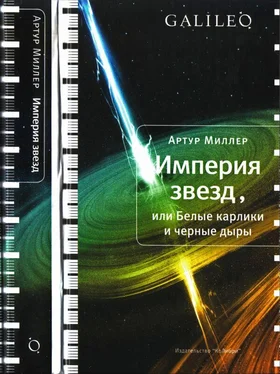
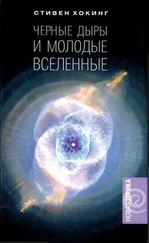

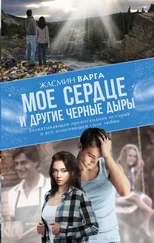
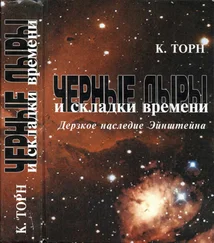

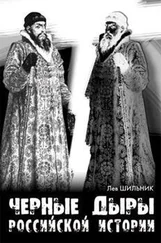

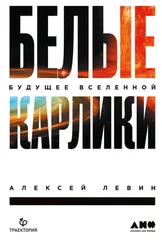
![Стивен Хокинг - Черные дыры. Лекции BBC [litres]](/books/402420/stiven-hoking-chernye-dyry-lekcii-bbc-litres-thumb.webp)
![Владимир Мазья - 007 и черные дыры [litres]](/books/438187/vladimir-mazya-007-i-chernye-dyry-litres-thumb.webp)
